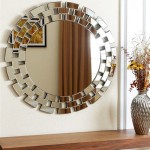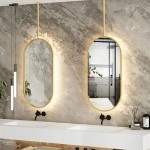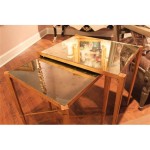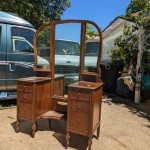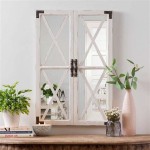How To Test A Two-Way Mirror
Two-way mirrors, also known as one-way mirrors or observation mirrors, create the illusion of reflection on one side while allowing unobstructed vision from the other. Determining if a suspected surface is a two-way mirror requires careful observation and testing. Several methods can be employed to ascertain the true nature of the glass.
The Fingernail Test: One of the simplest methods involves placing a fingernail against the reflective surface. With a regular mirror, a gap will be visible between the fingernail and its reflection due to the layers of glass present. However, with a two-way mirror, the reflection appears to touch the fingernail directly, indicating the absence of a second layer of glass typical in standard mirrors.
The Light Level Comparison Test: This method relies on the principle that a two-way mirror allows some light to pass through. If the lighting on the suspected mirror side is significantly brighter than the other side, it suggests the presence of a two-way mirror. The brighter the observation side, the more visible the reflected surface becomes, while the darker side allows for observation through the glass. Conversely, if the lighting is similar on both sides, it is less likely to be a two-way mirror.
The Observation Test with a Partner: This test involves having one person stand on the suspected mirror side while another person observes from the other side. The observer should try to look through the glass while the person on the mirror side blocks out as much light as possible, perhaps by cupping their hands around their eyes and peering closely at the glass. If the observer can see through the glass, even faintly, it confirms the presence of a two-way mirror.
The Sound Test: Sound can sometimes reveal the nature of the glass. Gently knocking or tapping on the surface can provide clues. A regular mirror will produce a duller, more absorbed sound due to the backing material behind the glass. A two-way mirror, often thinner and without backing, tends to produce a brighter, more resonant sound.
The Flashlight Test: Shining a bright flashlight directly onto the surface can help differentiate between mirror types. The light from the flashlight will reflect back strongly off a regular mirror. With a two-way mirror, some light will pass through, potentially illuminating the observation area behind it. This test is more effective in dimly lit environments.
The Viewing Angle Test: Two-way mirrors rely on a difference in light levels to function effectively. By changing the viewing angle and observing the reflection, one can potentially discern the properties of the glass. Shifting the perspective might reveal a slight transparency or a change in reflectivity, suggesting the presence of a two-way mirror.
The Coin or Small Object Test: Similar to the fingernail test, placing a small, flat object like a coin against the mirror can help determine the glass type. If a noticeable gap exists between the object and its reflection, it suggests a standard mirror. If the reflection appears to touch the object directly, it points towards a two-way mirror. This method is best used in conjunction with other testing methods for greater accuracy.
Considerations and Limitations: It is crucial to understand that these tests are not foolproof. The effectiveness of each method depends on various factors, including the quality of the two-way mirror, lighting conditions, and the surrounding environment. Certain specialized two-way mirrors are designed to be more difficult to detect. In situations where privacy is a serious concern, relying solely on these tests is not recommended. Consulting with security professionals or law enforcement may be necessary for a definitive assessment.
Further Investigation: If suspicions remain after conducting these tests, further investigation may be warranted. Examining the surrounding structure for hidden cameras, vents, or unusual fixtures can provide additional clues. Consulting with a qualified expert in surveillance technology or law enforcement can provide a professional assessment and determine the presence of surveillance equipment.
Environmental Factors: The effectiveness of these tests can be influenced by environmental factors. For example, bright sunlight can make it difficult to discern the subtle differences in reflectivity between a two-way mirror and a regular mirror. Similarly, extremely dim lighting on both sides can render the light level comparison test ineffective. Therefore, it is recommended to perform these tests under varying light conditions for a more comprehensive assessment.
Professional Consultation: Ultimately, determining the presence of a two-way mirror with absolute certainty may require professional expertise. Security consultants or law enforcement agencies have access to specialized equipment and training that allows them to identify sophisticated surveillance techniques. If privacy concerns persist, seeking professional assistance is the most reliable course of action.

How To Tell If A Mirror Is Two Way Or Not 8 Steps With Pictures

How To Detect A Two Way Mirror Fingernail Test

Fingernail Test Comparison Between Standard Mirror And Acrylic Two Way Mirrors

How To Tell If A Mirror Is Two Way Or Not 8 Steps With Pictures

How To Tell If A Mirror Is Two Way Or Not 8 Steps With Pictures

How To Tell If A Mirror Is Two Way Or Not 8 Steps With Pictures

How To Tell If A Mirror Is Two Way Or Not Quora

How To Detect A Two Way Mirror Fingernail Test

Forwarded Messages A Mirror Or 2 Way Glass Two Helpful Hints Things To Know

Tips For Identifying Whether Your Mirror Is Two Way Or Not Ledmyplace


